John Turner – 6 November, 2014
Last week's “Dutch Days” promotion campaign in Beijing was evidence of Holland's concerted effort to consolidate diplomatic and commercial advantages in China, and it worked. Dutch art has been promoted through dance performances, films, and photography in a timely cultural offensive - something New Zealand's cultural ministers should take notice of.
Foam exhibtion at Three Shadows
Still/Life: Contemporary Dutch Photography
October - November 2014
Forum at CAFA
Museum Management in the World of Photography
30 October 2014
I don’t know who decides these things but last week’s Dutch Days promotion campaign in Beijing was evidence of Holland’s concerted effort to consolidate diplomatic and commercial advantages in China, and it worked. Dutch and Chinese businesses, as reported on 31 October, have already signed contracts to the tune of “at least half a billion euros.” Dutch art has been promoted through dance performances, films, and photography in a timely cultural offensive - something New Zealand’s cultural ministers should take notice of. Previously it was through a “Design Week” blitz.
For photography, this follows up on the strong Dutch influence at the 1st Beijing Photo Biennale held last year, when the small “international” section was directed by the Dutch curator, Bas Vroege, director of Paradox, former director and editor for Perspektief, a centre for photography in Rotterdam. With museum management and cooperation as one focus of the March 2014 Memorandum of Understanding for cultural exchange between the Netherlands and Chinese governments, and Amsterdam and Beijing celebrating 20 years as sister cities, the all-important political stage was set for Holland to further its influence in China.
The photographic component came from Amsterdam’s Foam gallery with its Still/Life: Contemporary Dutch Photography show, which was opened in Beijing in October at the Three Shadows Photography Art Centre in Caochangdi. The original Still/Life…. exhibition was presented at Foam’s gallery in Amsterdam in 2011. It then traveled to Moscow and other cities in the Russian Federation in 2013, was downsized earlier this year, older work changed for new, then tailored again with the involvement of Chinese curators for presentation in Beijing.
With this report, however, I want to focus on the Museum Management in the World of Photography forum held at the Central Academy of Fine Arts (CAFA) Museum on 30 October. The Foam contingent consisted of Marie-Luce Bree (Deputy Director), Marcel Feil (Artistic Director and curator of Still/Life….) and their marketing guru, Pjotr de Jong, from the Vandejong Creative Agency.
The Chinese forum presenters were co-curators with Feil of the Foam exhibition: Feng Boyi, a seasoned champion of contemporary art in China; and Liu Gang, the linchpin whose own photography and curatorship has focused on aspects of Dutch culture. (Wang Dong, credited as a fourth curator of Still/Life …. did not seem to be present.) They were joined by RongRong, who with his wife inri founded Three Shadows in 2007, Zhang Zikang, Deputy Director of the National Art Museum of China, and Tsai Meng, curator of the CAFA Art Museum.
The CAFA Museum’s Dutch Day started with a well presented introduction by Marcel Feil, dealing firstly with Foam as an organisation, and then walking the audience through their current exhibition. Foam’s approach is smart. It’s a gallery of photography in Amsterdam, housed in a historic building, is relatively small (certainly by Chinese standards) but pulls the crowds through innovative outreach programmes. It runs an annual talent search, and Foam, a Vogue-sized periodical with wide distribution. Now in its 13th year, Foam is growing in influence by starting to engage with the rest of the world, often in unison with the Dutch government’s diplomatic and business forays. Essentially, it is doing what the late New Zealand Centre for Photography should have been doing, and what in its small, commercially unsuccessful way, PhotoForum in New Zealand has been trying to do for 40 years.
By the end of Marcel Feil’s slide show I was getting the impression that the Still/Life: Contemporary Dutch Photography exhibition was going to be a fairly predictable academic exercise. He had warned that the slides he was showing did not do justice to the actual works, lamented that time did not allow him to show any of the videos. And he was so right: It’s an exemplary exhibition - one of the very best I have seen at Three Shadows - presented with their usual panache.
Three Shadows, designed and built with the help of Ai Weiwei, is a well-functioning art centre established as a unique pioneering venture for China in 2007. It has established a solid reputation as a shaker and mover. But one aspect of doing business with “Chinese Characteristics” is that they don’t get the kind of corporate, private, or municipal backing that Amsterdam’s Foam enjoys. Three Shadows produce some fine publications but do not publish a lavish magazine with international reach. They have good little bookshop with few foreign titles, and a growing library to make up for that lack. They produce some of the most important exhibitions of photography in China but can seldom circulate them. Their few foreign shows are usually financed with foreign money (as are those of the International Center of Photography in New York, incidentally).
Costs are one barrier, which is why the Dutch and not the Chinese have mainly financed these events, but another seems to be caused by what is a highly fragmented art scene here. China may be growing a huge audience for the arts, but the lack of coordination and open communication makes for an often confused and surprisingly unsupportive art fraternity with many cliques and little collaboration when it comes to promoting photography as a means of communication and expression at the highest level.
Certainly, that is my impression from the CAFA forum, where there were only about 60 attendees, most of whom were young and seemed likely to be CAFA students or recent graduates. I did not see any of the gallerists and curators from the 798 Art Centre who have done as much as anybody to put photography on the map in China, and could not detect any of the local academics whom I expected would attend and participate. It was a worthwhile event, but I felt caught up in a Foam/Three Shadows/CAFA branding bubble rather than a more open forum.
Marie-Luce Bree at the afternoon’s forum repeated much of what Marcel Feil had told us about Foam in the morning, but her slides indicated, for instance, that there was a shift from something like 80% Amsterdam city funding to start with lowering to around 20% as Foam built up its and corporate funding base. They showed that they have “partnerships” with banks, but did not spell out the quid pro quo. Their statistics also showed that its audience was 20% younger than the average for other Dutch museums, with more women than men taking notice. Pjotr de Jong’s talk focused on branding Foam in regard to ideas, promotion and market research - with the same advice that is free from marketing gurus on the internet.
Besides, with so much emphasis on their image already, China has got horribly ahead of itself through building hundreds of new museums with little idea of what to do with them - or how to run them! Hence the nominal theme of this forum. Foam, unfortunately, did not present any case studies to provide the nuts and bolts on how specific activities were grown, nor how they got the banks to roll with them? Ironically, their marketing strategy did not stretch to having actual copies of Foam for the audience to peruse or buy.
Foam’s example does provides a pertinent, if somewhat tantalising model for others to emulate, but their presentation was done at the expense of other Dutch organisations doing their bit for photography, and without reference to historical developments in Dutch photography. This absence was highlighted by the Chinese speakers’ ready acknowledgement of the weight of their political and cultural history on their attempts to develop a discerning audience for photography in China. They mentioned that historical archives are still closed to researchers. They also pointed out a lack of informed academics, as well as the lack of professionalism in museums, etc, etc. That is why Three Shadows is such a shining example, and without them (and Shenzhen’s adventurous He Xiangning Art Museum, and CAFA) it is unlikely that this belated dialogue about photography in Holland, or other countries, would ever occur.
Zhang Zikang was a passionate speaker who at one time in the forum was chided by Feng Boyi as being “too idealistic”. I don’t know what Zhang is doing at the National Museum in Beijing, or how long he has been there, but I was amazed at how backward it was when I attended the opening of the token Te Papa Brian Brake and Pounamu shows there in November 2012. I was told by their staff that they had no library and no collection of photographs. I found it hard to believe their naive presentation of the history of the People’s Republic of China as a giant scrap album of pictures of the Communist Party’s leaders - usually presented with substandard second and third generation photographic prints rather than originals. A display not worthy of a national museum, totally out of character with the sophisticated object-oriented display of their Chinese artifacts and treasures.
Zhang Zikang mentioned a raft of barriers set up by his government for Chinese galleries and museums to function as modern institutions, what he characterised as a “physchology of resistance” preventing all kinds of necessary crossover. A public gallery cannot receive corporate or private funding. Nor could they sell work. He criticised the Chinese Photographers Association for doing too little for the advancement of photography and historical research. (The CPA is a huge government-sponsored group which finances exhibitions, books, and periodicals including Chinese Photography.) Outdated rules prevent museums to present one person exhibitions or retrospectives by living Chinese artists. The credibility of Chinese academics was another issue raised, as was that of private galleries taking on the role of public institutions by default, and collecting work for posterity. All advancements, it seemed, are held back by regressive bureaucratic policies.
RongRong also mentioned that China was lagging behind in photographic education. He stressed the value and importance of having a good library, and the necessity of having collections of original prints for display and study. Before they started their +3 Gallery, they were unable to sell prints without required official permission, and are still not allowed to sell work from their other exhibitions. (For the government, non-profit status seems to mean non-selling, full stop. So it would have been good at that point, to hear from people like Na Risong, Director of Interart Space and Gallery, or Xie Hailong, to share their experiences as gallery managers.)
Tsai Meng gave an overview of CAFA Art Museum’s photography exhibitions, but having just returned from Germany, first mentioned how highly regarded photography was in Europe. CAFA’s first exhibition was on the theme of the landscape (2009), the second a Marc Riboud retrospective. In 2012 they organised the ‘100 Vintage Prints’ show from the Charles Jin collection. Last year CAFA organised the 1st Beijing Biennale ‘Aura and Post Aura’ (a la Walter Benjamin) which was a truly major event and wonderful showcase for Chinese photography, but no means international in scope. A smaller version of the Biennale, reverting to the theme of CAFA’s first exhibition, was presented at Photo Shanghai this year as Contemporary Photography in China from 2009-2014. Judging from the catalogue, it would be great to see that show go on an international tour. But in the meantime, Amsterdam, at least, will soon get its taste of Chinese photography via Three Shadows/Foam.
Tsai likened the current situation to the necessity of creating an infrastructure like a good drainage system ready to cope with a flood. Time is needed, he and other panelists agreed, for China to set in place well resourced museums, to improve the art education system, and train the curators and managers needed to preserve and promote Chinese culture here and abroad on equal terms with the world’s best galleries and museums.
John B Turner

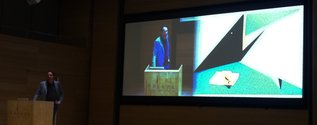
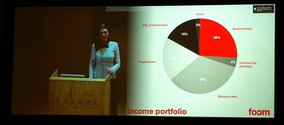
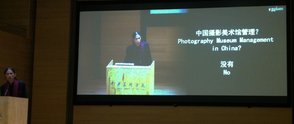

 Two Rooms presents a program of residencies and projects
Two Rooms presents a program of residencies and projects Advertising in this column
Advertising in this column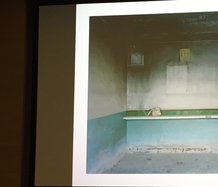
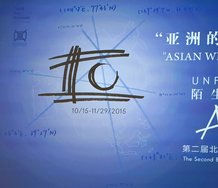

This Discussion has 0 comments.
Comment
Participate
Register to Participate.
Sign in
Sign in to an existing account.